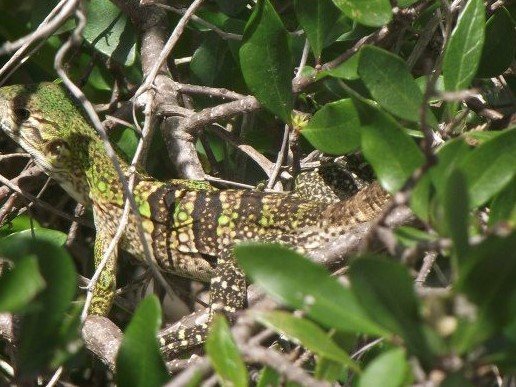Reptile Identification Contest #6: Answer Revealed!
A big thanks to all those who took part in yesterday's sixth Reptile Identification Contest and another congratulations to our winner @diya28 for the successful identification! This was another very difficult challenge but everyone who participated submitted some great guesses!
So, were YOU able to identify the mystery reptile?

The answer is...Ctenosaurus similis, the Black Ctenosaur! (Pronounced "Tee-no-saur")

For those of you wondering why I nitpick and require scientific Latin names for the contest, the black ctenosaur is a perfect example of how annoying common names can be; the lizard is also known as the black iguana, black spiny-tailed iguana, or just simply ctenosaur, so reptiles are typically called by their scientific name to avoid confusion. This particular contest was especially difficult because I used a photo of a juvenile, which is very different in appearance from the mature ctenosaur. While the young may be green or brown with black stripes, adults are typically dark grey or black and have a distinct crest of spines running down their backs.

The ctenosaur is a large lizard (adults can reach up to four feet) native to Mexico and Central America, but has been introduced to Florida (all of the photos in this post were taken during my trip to Key Biscayne, Fl). It represents a popular food source, and is hunted alongside green iguanas for its meat; in some parts of Central America, it is even known as the "chicken of the trees". Although heavily hunted, the species is not endangered in any of its native territory, and experts now worry that their spread may negatively impact native threatened animals. Opportunistic feeders, the ctenosaur feeds primarily on vegetation, but it also will eat small vertebrates, arthropods, eggs, and even hatchling sea turtles.

This is a male (their throats turn orange during mating season) that was bobbing his head to show dominance and attract a mate.
The ctenosaur is an excellent climber and spends a lot of time high on rocks or in trees where it can bask. If cornered, one may bite or strike with its tail, however their greatest defense is their incredible speed. More than once we approached for a picture only for the lizard to dart off shockingly quickly. The Guinness Book of World Records actually lists the ctenosaur as the fastest lizard in the world; when sprinting it can reach up to 34.6 km/h!

Again, thank you to everyone who participated in the contest (and congrats once more to our winner)! We had a lot of fantastic guesses for a very difficult identification! If you missed this contest or wish to participate in future contests to earn valuable sbd (or just learn a little more about identifying cool reptiles and amphibians) give me a follow; I'll be trying to post contests more frequently as long as interest remains high!

muy buena propuesta!
LIZARD!!